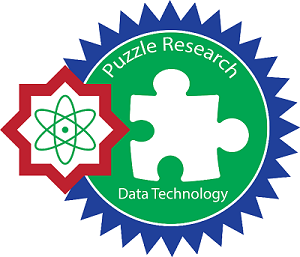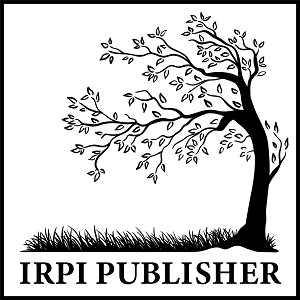ADDITIONAL MENU
Data Mining Optimization Using Sample Bootstrapping and Particle Swarm Optimization in the Credit Approval Classification
Abstract
Credit approval is a process carried out by the bank or credit provider company. Where the process is carried out based on credit requests and credit proposals from the borrower. Credit approval is often difficult for banks or credit providers. Where the number of requests and classifications must be made on various data submitted. This study aims to enable banks or credit card issuing companies to carry out credit approval processes effectively and accurately in determining the status of the submissions that have been made. This research uses data mining techniques. This study uses a Credit Approval dataset from UCI Machine Learning, where there is a class imbalance in the dataset. 14 attributes are used as system inputs. This study uses the C4.5 and Naive Bayes algorithms where optimization is needed using Sample Bootstrapping and Particle Swarm Optimization (PSO) in the algorithm so that the results of the research produce good accuracy and are included in the good classification. After using the optimization, it produces an accuracy rate of C4.5 which is initially 85.99% and the AUC value of 0.904 becomes 94.44% with the AUC value of 0.969 and Naive Bayes which initially has an accuracy value of 83.09% with an AUC value of 0.916 to 90 , 10% with an AUC value of 0.944.
Full Text:
PDFReferences
Oesterreichische Nationalbank , Credit Approval Process and Credit Risk Management, Vienna:
Oesterreichische Nationalbank , 2004.
I. H. Witten dan E. Frank, Data Mining, Practical Machine Learning Tool and Techniques, San
Francisco: Morgan Kauffman, 2005.
K. dan E. T. Luthfi, Algoritma Data Mining, Yogyakarta: Andi Offset, 2009.
L. Fausett, Fudamental of Neural Networks, New Jersey: Prentice-Hall, Inc, 1994.
T. A. Setiawan, R. S. Wahono dan A. Syukur, “Integrasi Metode Sample Bootstrapping dan Weighted
Principal Component Analysis untuk Meningkatkan Performa k Nearest Neighbor pada Dataset Besar,”
Journal of Intelligent Systems, vol. 1, no. 2, p. 1, 2015.
S. R. Wicaksono, Sistem Berbasis Pengetahuan, Malang: Seribu Bintang, 2018.
M. M. Arroyo dan L. E. Sucar, “Learning an Optimal Naive Bayes Classifier,” The 18th International
Conference on Pattern Recognition, vol. 3, pp. 1236-1239, 2006.
C. Darujati dan A. B. Gumelar, “Pemanfaatan Teknik Supervised untuk Klasifikasi Teks Bahasa
Indonesia,” vol. 16, no. 1, 2012.
H. Muhammad, C. A. Prasojo, N. A. Sugianto, L. Suryatiningsih dan I. Cholissodin, “Optimasi Naive
Bayes Classifier Dengan Menggunakan Particle Swarm Optimization pada Data Iris,” Jurnal Teknologi
Informasi dan Ilmu Komputer, vol. 4, no. 3, pp. 180-184, 2017.
J. Kennedy dan R. Eberhart, “Particle Swarm Optimization,” Proc. IEEE Int. Conf. Neural Network,
T. Sousa, A. Silva dan A. Neves, “Particle Swarm based Data Mining Algorithms for classification
tasks,” Parallel Computing, no. 30, pp. 767-783, 2004.
H. Ishwaran dan J. S. Rao, “Decision Trees, Advanced Techniques in Constructing,” dalam
Encyclopedia of Medical Decision Making, California, SAGE Publications, Inc., 2009, pp. 328-332.
M. Qumsiyeh dan G. Saughnessy, “Comparison of Re-sampling Methods to Generalized Linear
Models and Transformations in Factorial and Fractional Factorial Designs,” Journal of Modern Applied
Statistical Methods, vol. 11, no. 1, pp. 95-105, 2012.
B. Efron dan R. J. Tibshirani, An Introduction to the Bootstrap, New York: Chapman & Hall, 1993.
A. Engelbrecht, Computational Intelligence: An Introduction, New York: Halsted Press New York,
J. Han, M. Kamber dan J. Pei, Data Mining Concepts and Techniques, Massachusetts: Morgan
Kauffman, 2012.
F. Gorunescu, Data Mining Concepts, Models & Techniques, Berlin: Springer-Verlag Berlin
Heidelberg, 2011.
D. T. Larose, Discovering Knowledge in Data, New Jersey: John Wiley & Sons, Inc., 2005.
DOI: http://dx.doi.org/10.24014/ijaidm.v2i1.6299
Refbacks
- —
- Data Mining Optimization Using Sample Bootstrapping and Particle Swarm Optimization in the Credit Approval Classification
- —
- —
Office and Secretariat:
Big Data Research Centre
Puzzle Research Data Technology (Predatech)
Laboratory Building 1st Floor of Faculty of Science and Technology
UIN Sultan Syarif Kasim Riau
Jl. HR. Soebrantas KM. 18.5 No. 155 Pekanbaru Riau – 28293
Website: http://predatech.uin-suska.ac.id/ijaidm
Email: ijaidm@uin-suska.ac.id
e-Journal: http://ejournal.uin-suska.ac.id/index.php/ijaidm
Phone: 085275359942
Journal Indexing:
Google Scholar | ROAD | PKP Index | BASE | ESJI | General Impact Factor | Garuda | Moraref | One Search | Cite Factor | Crossref | WorldCat | Neliti | SINTA | Dimensions | ICI Index Copernicus
IJAIDM Stats










